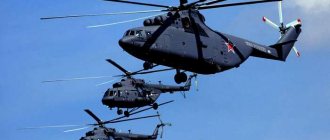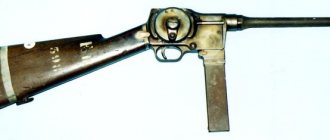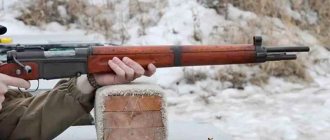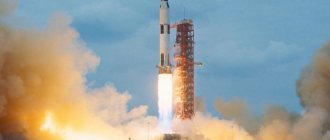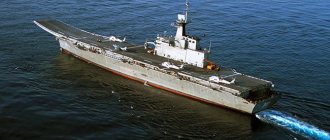The Mirage fighter-interceptor was designed to be as light and small as possible in order to provide a thrust-to-weight ratio of 1 in combat equipped condition when using one SNECMA M53-5 turbofan engine. On the Mirage 2000 aircraft, they returned to the delta wing of the Mirage family of aircraft. III. and to increase maneuverability, the device was equipped with a fly-by-wire flight control system. which allows you to stretch the line of the center of mass towards the tail section more than on traditional aircraft. This leads to a decrease in its own stability (without using auto-stabilization).
History of creation
On December 18, 1975, the French government decided to create a new generation fighter for the Air Force, designed to gain air superiority and solve air defense problems.
The first prototype Mirage 2000 took off on March 10, 1978. In parallel with the single-seat combat aircraft, the two-seat combat trainer Mirage-2000B was developed; its first flight took place in 1980. Mirage-2000B served as the basis for the creation of a whole family of two-seat attack aircraft that replaced the Dassault Mirage-III and Mirage-V fighter-bombers (these machines are described in the book by V. E. Ilyin and M. A. Levin “Modern Fighters”) and “Eurostrategic” Dassault Mirage-IV bombers. In 1983, a two-seat fighter-bomber Mirage-2000N was created, designed to deliver French nuclear weapons. in fact, this aircraft was assigned missions similar to those of the American F-100 and F-101 fighter-bombers of the late 1950s and early 1960s. The creation of the French bomb began back in 1945, when, on the orders of President Charles de Gaulle, the CEA Atomic Energy Commissariat (Commissariant a l'Energie Atomique) was formed, which was entrusted with the tasks of organizing the national nuclear program. In 1951, the direct development of nuclear weapons began, coordinated by the Special Weapons Directorate (Commandement des Armes Speciales) created for this purpose. In December 1954, based on a secret decree of the Prime Minister, this work was accelerated, and in May 1955, the design of specific “special ammunition” began. In November 1956, the CEA began preparing the first French explosion of an experimental nuclear device, which was carried out on February 11, 1958. In April of the same year, a program was adopted to equip the French Air Force with nuclear weapons, according to which in 1960-64. it was planned to produce 40 nuclear bombs to arm Dassault Mirage-IV bombers. On February 13, 1960, the first French plutonium (Pu 239) nuclear bomb AN-11 with a yield of 60-79 kt was detonated at a test site in Algeria. Subsequently, this ammunition underwent a number of improvements aimed at reducing its weight. In its final form (explosion on May 1, 1962), the bomb had a power of 50 - 60 kt. Its first release from a real carrier aircraft, the Mirage-IVA bomber, took place on July 19, 1966, but the deployment of nuclear weapons began somewhat earlier, in the fall of 1964. The bomb, weighing 1,500 kg, had an ogive-shaped body 6.6 m long with a developed tail and was placed in a semi-recessed position under the fuselage of the Mirage-IV aircraft (each bomber could carry only one ammunition). There was a fuse with a temporary mechanism, which ensured detonation of ammunition at high altitudes, as well as a radio fuse (for low-altitude explosions). 40 AN-11 bombs entered service with 36 Mirage-IV bombers. Mirage-IVA with an AN-11 bomb and two PTBs had a combat radius of 1,500 km (high-low-high altitude profile) and could only be considered as an operational-tactical weapon system. According to American data, in 1964 the French Air Force had four nuclear bombs, in 1965 their number increased to 32, and in 1966 to 36. The improvement of the Soviet air defense system forced strike aircraft to switch to low-altitude operations. However, the design of the AN-11 bomb allowed it to be used only from high altitudes. It was necessary to create a low-altitude modification equipped with a braking parachute. The upgraded ammunition, designated AN-22, had a slightly increased power (up to 100 Kt) and an improved safety system. The mass of the bomb was 1400-1500 kg. In 1968, the conversion of AN-11 bombs to AN-22 began. In total, the French Air Force received 36 AN-11 bombs, which were used to arm 36 Mirage-IVA bombers (at the same time, these aircraft were equipped with an in-flight refueling system and acquired the ability to carry out strategic strikes on USSR territory). In 1972, the number of AN-22s was reduced to 32, in 1983-85. - up to 28, in 1986-87. -up to 24 and in 1988 - up to eight. In the early 1990s, these ammunition were withdrawn from service. On July 2, 1966, the first French “tactical” nuclear weapon, the AN-52 plutonium bomb, was tested. The power of the explosion was estimated at 30 kt. In 1972, the bomb entered service with tactical aviation, and on August 28, 1973, on Mororua Atoll, a Dassault Mirage-IIIE aircraft carried out the first real bombing with this ammunition (the explosion power was 6.6 Kt). In addition, the AN-52 was used as a warhead for the Pluto tactical missile, which entered service with the French army. There were two versions of the AN-52 ammunition, which had a power of 6-8 and 25 Kt (of the 80-100 AN-52 ammunition manufactured, 2/3 had a reduced power). The mass of the AN-52 nuclear bomb, which in appearance resembled an external fuel tank, was 455 kg, length - 4.2 m, diameter - 0.6 m, tail span - 0.8 m. The bomb had a braking parachute, the standard detonation height was 150 m 30 Mirage-IIIE fighter-bombers (used in this capacity in 1973-88) and 45 SEPECAT Jaguar A (1974-91) were equipped to carry tactical nuclear bombs. In addition, the Navy had 24 Super Etendard fighter-bombers, also capable of carrying nuclear weapons. On the Mirage IIIE and Jaguar A aircraft, the AN-52 ammunition was suspended on the central ventral unit, and on the Super Etendard fighter-bomber - under the right wing console on the suspension unit No. 6. In 1991, the AN-52 bomb was also removed from service.
68 French Air Force North American F-100D Super Saber aircraft based in West Germany in 1961-66 were equipped with American B28 thermonuclear bombs. These were modifications B28EX (weighing 925 kg) and B28RE (984 kg), the power of which was 70 kt. Ammunition control was carried out by US personnel. The French government has not yet officially confirmed the fact of its possession of American-made nuclear bombs in the 1960s. In the 1970s, work began on the creation of a new generation of aviation nuclear weapons - the Aerospatiale ASMP (Air-Sol Moyenne Portee) supersonic cruise missile. On July 17, 1974, the TN-80 nuclear warhead with a power of 300 Kt, intended for completing a rocket, was tested. Testing of this warhead was completed in 1980, and the first ASMP missiles with the TN-80 entered service with the French Air Force in September 1985. In 1984, testing began on the lightweight warhead TN-81 (weight 175-200 kg), which was completed in 1985. The ASMP rocket is equipped with a ramjet engine (kerosene is used as fuel) and a solid propellant booster. The maximum speed at high altitude corresponds to M=3, at the ground - M=2. The launch range range is 100-300 km (obviously for a missile with a TN-80 warhead) or 90 - 350 km. The launch weight of the launch vehicle is 840 kg. A total of 90 ASMP missiles and 80 nuclear warheads for them were manufactured. Initially, the missile carriers were 18 Mirage-IVP aircraft (since May 1986, converted from Mirage-IVA bombers), but in 1997 the Mirage-IVP was withdrawn from service and the only “nuclear” aircraft in the French Air Force remained 42 Mirage-2000N fighter-bombers (out of 45 built), which began to arrive in combat units in July 1988. The French Air Force received 25 aircraft of this type of the 1st series, designated Mirage-2000N-K1 and carrying only the ANSP missile. The aircraft are equipped with an Antelope radar, which ensures flight in terrain following mode, as well as a duplicated INS and a dual radio altimeter. From 1988 to 1993, Mirage-2000N-K2 attack aircraft were built, capable of using both ASMP nuclear missiles and conventional ammunition. In total, it is planned to build 75 Mirage-2000M fighter-bombers. On the basis of the Mirage-2000N, in 1991, the Mirage-2000D multi-role attack aircraft, originally called the Mirage-2000M, was created, designed to deliver various types of non-nuclear air-to-surface weapons (its armament does not include an ASMP missile). The aircraft is equipped with a terrain following system with Antelope-50 radar and advanced electronic radar equipment. In 1994, aircraft of this type began to enter service with the French Air Force (90 aircraft of this type should be delivered by 1999). The first six Mirage-2000D (R1N1L) bombers were equipped exclusively with laser-guided strike weapons (the Atlis container, two Aerospatiale AS.30L missiles or three KAB), as well as two Matra Magic missiles. The Mirage-2000D R1 series aircraft can carry the entire range of strike weapons of the French Air Force (free-fall bombs, NAR). The Mirage-2000D R2 series fighter-bombers, which began delivery in 1997, are to carry the Apache tactical cruise missile. Together with Mirage-2000С fighters, Mirage-20000 fighter-bombers as part of the multinational NATO forces took part in “peacekeeping” operations in Bosnia. The French Air Force reported the loss of a Dassault Mirage-2000D fighter, shot down near the city of Pale by Serbian air defense on August 30, 1995. Both pilots ejected. Mirage-2000D took part in a raid on Serbian air defense systems, as well as ammunition and ammunition depots concentrated in the area. Strike variants of the Mirage-2000 were used in combat operations against Yugoslavia in 1999.
Start of the Mirage F program
Responding to a request from the French Air Force headquarters, Dassault, then known as Générale aéronautique Marcel Dassault (GAMD), developed an aircraft designated Mirage IIIT2, which was changed to Mirage IIIF on September 16, 1963. On November 21, Dassault CEO Benno-Claude Vallieres signed a contract to develop a prototype aircraft powered by the TF 106 engine.
The new aircraft was developed by a group led by Jean-Jacques Samin. The low-lying delta wing was replaced by a high-lying wing with high sweep (55°) and lift-increasing wing mechanization devices. Dassault CTO Henri Déplante explained this choice:
“Advanced technological processes (integral milling and chemical milling, new high-strength materials) have made it possible to create a wing that is both very thin and very strong. This led to a return to classic swept wings with the impossibility of significantly increasing lift [by means of wing lift] on delta wings.”
The horizontal tail is low-mounted and installed at the rear of the fuselage.
The empty weight of the aircraft (9.8 tons) was twice that of the Mirage IIIE fighter-bomber, some of the characteristic features of which were borrowed (means of wing mechanization to increase lift, landing gear attachment points, weapons systems and structural design). The two-seat flight deck fuselage had a pressurized load-bearing structure to accommodate as much fuel as possible, and was supported by a landing gear with a single-wheel nose gear and side-by-side main landing gear.
On-board equipment
Multi-purpose Doppler radar Dassault Electronics/Thompson-CSF "Antelope", providing automatic following of the terrain at an altitude of 60 m at a speed of up to 1112 km/h. The Antelope-5 radar on the Mirage-2000M aircraft provides altitude correction for the navigation system. The Antelope-5-3C station (Mirage-2000D) has an terrain mapping mode that provides extreme correlation navigation. The aircraft has a built-in ICMS electronic radar complex, which includes a Thompson-CSF Serval radar receiver and an automatic Matra “Spiral” IR decoy ejection system (located in the fairings at the junction of the wing and fuselage). There is a Dassault "Kameleon" active jamming system. Mirage-2000M is equipped with two SAGEM inertial platforms, two advanced TRT AHV-12 radio altimeters and an integrated vertical AFA "Omera" (for monitoring bombing results). In the front and rear cockpits of the Mirage aircraft. 2000N has one color indicator on a Thompson-CSF CRT, as well as a VMC-180 HUD (in the forward cockpit). The Mirage-2000D aircraft is also equipped with multifunctional screen indicators (one for the pilot and two for the operator). The ventral hardpoint can accommodate the Thompson-CSF "Rafael" radar, a small-sized container for photographic reconnaissance Dassault COR2 (weight - 400 kg), long-focus photographic equipment for long-range shooting Dassault AA-3-38 "Harold" (680 kg). The Mirage-2000D aircraft can carry a container with thermal imaging equipment (FUR) Dassault/TRT/Intertechinc Rubis (110 kg), a television-thermal imaging all-weather tracking system Thompson-CSF PDLCT (340 kg; on export Mirage-2000S aircraft - CLDP/ "Atlis" 2). For electronic reconnaissance, the aircraft can be equipped with a Thompson-CSF TMV 004 (CT51J) “Cayman” container weighing 550 kg or a Thompson-CSF “Astak” container (400 kg). Suspended REP means include two containers of active Thompson-CSF DB3141/3163 “Remora” (2x182 kg). In 1994, bombers participating in combat operations over Bosnia were equipped with an infrared warning system for the approach of SAT SAMIR missiles (located on the Magic missile launcher).
Mirage 2000 Dimensions. Engine. Weight. Story. Range of flight. Service ceiling
The Mirage fighter-interceptor was designed to be as light and small as possible in order to provide a thrust-to-weight ratio of 1 in combat equipped condition when using one SNECMA M53-5 turbofan engine. On the Mirage 2000 aircraft, they returned to the delta wing of the Mirage family of aircraft. III. and to increase maneuverability, the device was equipped with a fly-by-wire flight control system. which allows you to stretch the line of the center of mass towards the tail section more than on traditional aircraft. This leads to a decrease in its own stability (without using auto-stabilization).
Sources and links
- Ilyin V.E. Multirole fighters of foreign countries
Main characteristics of the Mirage-2000 multirole fighter
| Start of work on the program | 18.12.1975 |
| First flight | 10.03.1978 |
| Dimensions | |
| Mirage-2000 | |
| Wingspan, m | 9,13 |
| Aircraft length, m | 14,55 |
| Aircraft height, m | 5,20 |
| Wing area, m2 | 41,0 |
| Weights, kg | |
| Mirage-2000 | |
| Maximum takeoff | 17 000 |
| Normal takeoff | 12 200 |
| Empty plane | 7600 |
| Take-off without external suspensions | 10 960 |
| Fuel in internal tanks | 3100 |
| Fuel in PTB | 3720 |
| Power point | |
| Mirage-2000 | |
| Manufacturer | SNECMA |
| Type | TRDDF |
| Brand | M53-P5 |
| Thrust, kgf | 9900 |
| Quantity | 1 |
| Flight characteristics | |
| Mirage-2000 | |
| Maximum speed, M number | 1,4 |
| Maximum speed at low altitude corresponds to, M | 1,2 |
| Practical ceiling, m | 16 460 |
| Ferry range, km | 3330 |
| Run length, m | 600 |
| Maximum operational overload | 8,0 |
| Armament | |
| Mirage-2000 | |
| Built-in cannon | Absent |
| Air-to-surface missiles | AS.30L, ASMP cruise missile with nuclear warhead (Mirage-2000N), Apache TKR (Mirage-2000D, SCALF cruise missile |
| Air-to-air missiles | Up to two Magic or Magic-2 missiles |
| KAB | Up to three |
| NAR and bombs | up to 6300 kg |
#agal Photos and diagrams #acdsee mirage-2000c-2.jpg 53 KB 640x450x24b jpeg Mirage-2000C| mirage-2000-dr.jpg 41 KB 800x449x24b jpeg Mirage-2000 fighter diagram | #/acdsee #/agal
Copyright © Serge Pod. Created 01/01/1970. -th version dated June 30, 2004. Average visits per day: 2.4.
Experience what not to do
Auditors of the Accounts Chamber added that
“The example of the Franco-British variable geometry aircraft project, work on which was suspended in January 1967 and terminated in July of that year, shows that it is possible to complete a program quickly when forecasts made in sufficient time show that design costs and production will be very high. Nevertheless, expenses reached 45 million francs.”
The ambitious French Air Force re-equipment programs launched in the 1960s - the vertical take-off Mirage IIIV, the Mirage F2 and F3, the variable-swept wing Mirage G, the Franco-British variable-wing aircraft - faced technical and budgetary limitations that led to their closure . However, it wasn't all bad. Experience with what not to do led to more sensible policies that were successfully implemented in both the airframe and the engine. First, the Mirage F1 fighter (with an Atar 9K50 engine) was created, and then the Mirage 2000 fighter (with an M53 engine), which were mass-produced and successfully exported. SNECMA was able to gain experience that can be found in the M88 engine of the Rafale fighter and in the civil CFM 56 engines that power transport aircraft.
from bottom to top: Mirage F1 with 9K50 engine, Mirage F2 and Mirage G with variable geometry wing. The last two aircraft were equipped with TF 306 engines. Photo by Dassault Aviation
FLIGHT CHARACTERISTICS OF MIRAGE F2/F3
Power point:
| engine's type | SNECMA TF 306C | SNECMA TF 306E |
| maximum power | 5210 kgf | 5970 kgf |
| afterburner power | 9150 kgf | 10330 kgf |
Dimensions:
wingspan 10.5 m length 17.5 m wing area 27 m²
Weight:
empty 10110 kg maximum 18320 kg
Engines of various Mirage F programs
| Airplane | engine's type | Engine power | Purpose | Program duration |
| Mirage IIIT | SNECMA TF104 | 6500 kgf | Engine testing TF 104 | 1959-1965 |
| Mirage IIIT | SNECMA TF106 | 7300 kgf | Testing the TF 106 engine | 1964-1967 |
| Mirage IIIT2 | SNECMA TF 106 | 7300 kgf | Two-seat long-range strike aircraft for low-altitude flights | 1963 |
| Mirage IIIF | SNECMA TF 106 | 7300 kgf | Two-seat long-range strike aircraft for low-altitude flights | 1963-1964 |
| Mirage IIIF2 | SNECMA TF 306 | 9500 kgf | All-weather, two-seat low-altitude attack and reconnaissance aircraft | 1964-1967 |
| Mirage IIIF2J Asmodee | Pratt & Whitney TF 30 | 8600 kgf | Project proposed for Israel | 1964-1967 |
| Mirage F3 | SNECMA TF 306 | 9500 kgf | Single-seat interceptor fighter and nuclear weapons carrier | 1965-1967 |
| Mirage F1 | SNECMA 9K50 | 7200 kgf | Multi-role fighter (single and two-seat) | 1964-2005 |

